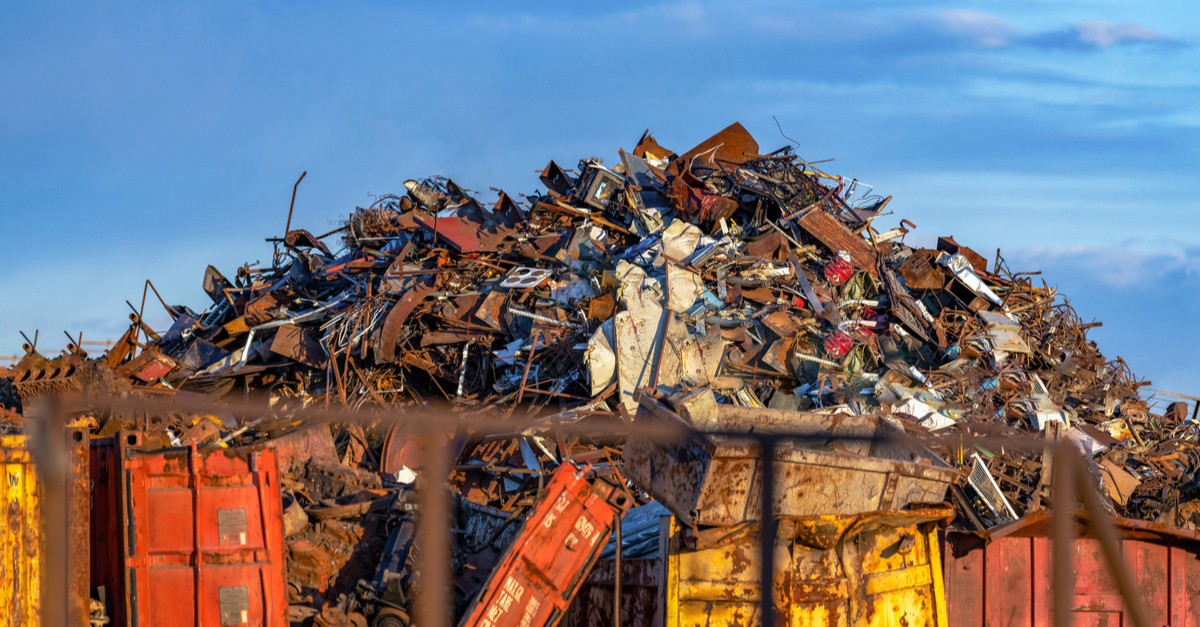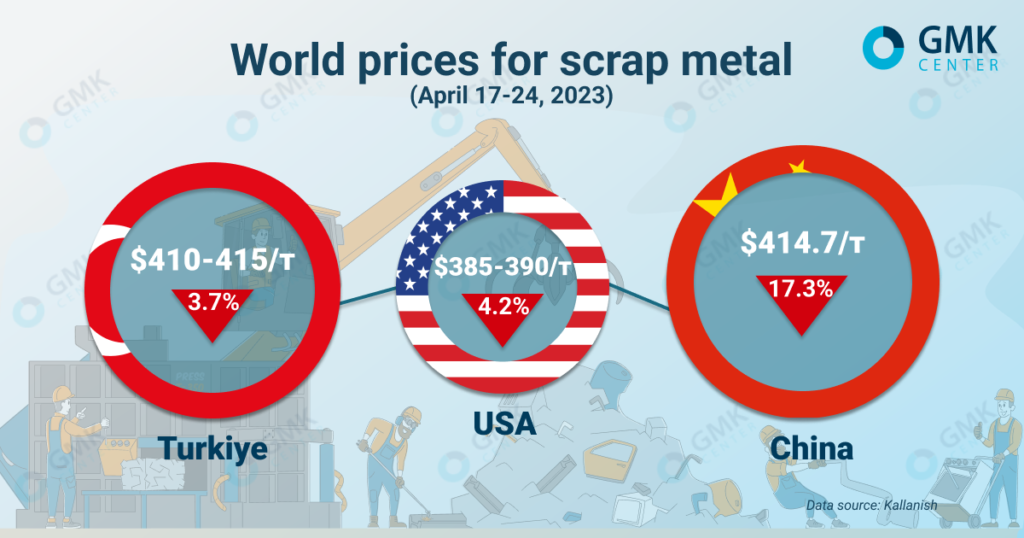
News Global Market scrap prices 1133 26 April 2023
Steelmakers are refusing to buy scrap because they are unsure of future steel sales
The global scrap market showed negative dynamics last week as apparent demand for steel remains low. Steel companies are forced to stop for maintenance and reduce production, thereby putting pressure on scrap prices.

World scrap prices
Prices for HMS 1/2 scrap in Turkiye for the week of April 17-24, 2023, fell by 3.7% compared to the previous week – to $410-415/t. Scrap demand among Turkish steel mills remains subdued amid weak market sentiment, low steel consumption and uncertainty ahead of the country’s upcoming presidential election. Additional pressure on the market is created by the daily depreciation of the lira against the dollar.
The pressure of active Chinese steel exports continues to create negative terms of trade for Turkish steelmakers. Cheap Asian steel makes the products of Turkish steelmakers uncompetitive on the global market, and there is also no domestic demand for steel.
According to market participants, after the elections, the situation with steel sales and scrap purchases will remain unchanged, as there are more serious problems, in particular, the lack of foreign currency and the unavailability of loans. Some plants are already reducing capacity utilization and, at the same time, the need for scrap.
In the short term, demand for scrap and steel sales is not expected to improve, at least until May 14 – for the elections.
Prices for Chinese scrap market last week also fell sharply – by 17.3%, to $414.7/t. The negative dynamics are associated with the shutdown of local steel plants for maintenance, as well as the fall in the margins of producers working on electric arc furnaces (EAF). As a result, during April 14-21, 2023, plants with EAFs used 66.4% of their production capacity, which is 11.9 percentage points less than the previous week.
The average daily volume of scrap supplies to all steel enterprises amounted to 287,000 tons, which is 6.8% less compared to the week of April 7-14. The average daily consumption of raw materials fell by 2.5% – to 315,000 tons.
To reduce price pressure amid weak demand, Chinese steel companies have begun maintenance on their facilities and are cutting production. In addition, the consumption of scrap is reduced amid power outages that are caused by drought.
The decline in the domestic scrap market reduced the already low interest in imports. Japanese scrap prices are still unacceptable to China. Last week, import prices were stable at $410/t.
USA scrap metal market for the week of April 17-24, 2023, fell by 4.2% compared to the previous week – $385-390/t.
Heading into May trading, sentiment in the US scrap market has soured after last week’s sharp drop in Turkish prices. Despite the fact that market participants do not have unequivocal predictions about the dynamics of prices of higher grades of scrap, everyone expects that the price of low-quality grades will fall during the auctions.
Turkish plants continue to put pressure on the prices of American raw materials. As positive development of the situation is not expected in the near future, local traders are confident in the further decline of prices.
The mood for Taiwanese exports is not better. Local mills have also begun to put pressure on raw material prices, believing that current price levels are too high.
“The steel market depends on the dynamics of the world economy development. Currently, there is an expectation that its condition will worsen in the second half of the year, in particular, due to the deepening of the banking crisis in the USA. These expectations have a negative impact on steel companies as well, encouraging them not to increase steel production and demand for scrap,” notes GMK Center analyst Andriy Glushchenko.
As GMK Center reported earlier, volumes of scrap metal collection in Ukraine in March 2023 decreased by 23.2% compared to the previous month – to 70.4 thousand tons. The export of scrap metal for March 2023 amounted to 15.5 thousand tons, which is 6.1% less m/m.




